Notes on the Asylum Where I Was Raised
In which I visit the Harvard protests, among other things
So I spent some time at the Harvard campus this weekend, and visited the “encampment” on Harvard Yard. It brought back some memories.
As some of you know, I’m an academic brat, and spent a fair bit of my childhood growing up around Harvard, mostly in various married student apartments. My dad got his Ph.D at the Divinity School, and we were around there basically from when I turned 4 until I turned 9, with a year off when we lived in Heidelberg as my father taught at the University of Heidelberg.
It was the 1960s, which means that there was a lot of protesting going on, of course, and my father was involved in a fair bit of it. Most of it took place elsewhere – for example, he traveled south back to his home turf in central Alabama to participate in the march at Selma, and was in the room with Martin Luther King and his advisers when some important decisions were made. (District Judge Frank Johnson, generally viewed as pro-civil rights, had issued a temporary restraining order blocking the march. Some of King’s advisors wanted to violate the order, which they, probably correctly, thought was unconstitutional. King said that they had gotten a lot of court orders against the segregationists, who had grudgingly obeyed them, and that was sure to come to an end if the civil rights folks started flouting them in their turn. They prayed instead of marching, until the order was lifted.)
Someone mysterious – my dad always denied any knowledge or connection – burned down the Harvard ROTC center, but most of the action was elsewhere. People were beaten, lost their jobs, and occasionally killed.
So that’s the asylum where I was raised: I grew up amidst all of this, though my childhood was probably more affected by the widespread drug use (my dad dropped acid with Timothy Leary before it was illegal) and promiscuity/infidelity of my dad’s cohort, people who started out square when they got to Harvard but quickly grew their hair and changed dramatically. Living in the married student quarters, I saw a lot of that first hand, and saw my first drug overdose when we were temporarily quartered in a Northeastern University undergraduate dorm for a summer. I’m sure the social changes must have been a disorienting mind-fuck to people of that generation: My dad at age 21 wouldn’t eat fruitcake because it was made with wine and he, a seminary candidate, had taken the pledge, only to wind up dropping acid a few years later. (In his old age, as he was near death, he noted in a moment of lucidity that, like him, everyone he had done DMT with in the sixties had developed Alzheimer’s. Well, experts warned back then that it caused brain damage. And this time they were right.)
My parents kept us kids mostly insulated from this stuff, but it was all around and there was no missing it, even in the married student apartments.
So this past weekend I went by the Harvard campus, looked in on the protest encampment, and then strolled by the Divinity School (both Divinity Hall and the much more impressive Swartz Hall) and then, navigating from childhood memory, over to the Holden Green married student apartments, which then as now were set aside for people with kids. I could have also visited the elementary school I attended then, known at the time as Agassiz Elementary School, which was renamed some years ago as once-famous scientist Louis Agassiz was canceled for racism, but I didn’t have that much time.
Anyway, a short report, with some photos, followed by some thoughts.
When I arrived at Harvard Yard, they were just closing it off.
ID cards were being strictly checked at the couple of entrances that weren’t just locked down. Police were conspicuous.
Some students resorted to climbing the fence, but I declined to go that far.
But it was possible to get a clear view of the tent encampment through the bars. It was smaller than the news photos make it look, and there wasn’t much activity even though it was a lovely Saturday afternoon.
I especially love the “Land Back” sign on an encampment that’s illegally occupying someone else’s land. Can you say “settler colonialism?”
It wasn’t an environmental protest, obviously:
But the Harvard authorities seem to have successfully encysted the tumor. Around Harvard Yard, life went on normally. People ate and drank at sidewalk cafes:
People played volleyball outside Divinity Hall:
And just outside Harvard Yard, the Artfest went on, though I understand its organizers were testy about being forced out of the Yard and having to set up their own – officially approved – tents on the street instead.
So the protests weren’t making a very big or obvious impact on the goings on around Harvard. Does this mean they don’t matter?
Well, no. Of course, even in the 1960s, the majority of college students weren’t serious protesters. (The promiscuity and the drugs got more enthusiasm, but even there, fewer students actually lived that lifestyle except in a fairly minor and casual way than you would have guessed from the media coverage.) But the cultural impact of those protests, amplified by the media and by the Establishment’s willingness to treat them as morally serious, was nonetheless huge. Over a fairly short time it set a new tone for American society, exactly as the media and the Establishment wanted.
In the same way, most Harvard students aren’t shouting anti-semitic slogans or calling for Jewish genocide. But that any significant or measurable number are doing so, and once again receiving media amplification and Establishment toleration, is a big deal. And it’s important that they’re not allowed to set a new tone for American society, despite the media and the Establishment.
There’s a lot more pushback this time. Students aren’t being drafted for an unpopular war (though the unpopularity of the Vietnam War has been exaggerated in retrospect, as polls showed surprising support for most of the protest era, with even 50% of college students supporting Nixon’s policies in 1969). There’s no big civil rights movement at stake (no, trans rights, the latest “civil rights” cause, aren’t remotely comparable to what Dr. King, and my father, were fighting for). And there’s no big demographic cohort suddenly coming into its own; we have a baby bust now, not a baby boom.
And it’s not clear that students themselves support this stuff, actually. The “activists” have managed to bully a lot of their cohorts, as leftist activists do, but it’s starting to backfire. Columbia students – taking advantage of secret ballots to avoid the bullying – elected a Jewish Israeli student as their student body president.
Meanwhile at Arizona State University, Jewish fraternity members helped campus police clear away the Gaza encampment there. As Campus Reform reports:
Dylan Marks, a Jewish student and member of a fraternity on campus who was pictured on the dumpster throwing a tent away, spoke to Campus Reform, saying the university was happy to let them help out.
“We had been speaking with the ASU staff who, having been called in on overtime, were eager to finish their work. When we offered our help, they gladly accepted, appreciating that it would expedite the process and allow everyone to head home sooner. We figured the faster they got off our campus the better even if that means taking out the trash,” said Marks.
“I don’t want to see my campus fall to divestment of donors for the actions of a few loud mouthed hamas supporters. This is America,” he continued. “I should not be told I’m not allowed on campus because of my race or religion. After traveling to Poland, the Warsaw Ghetto uprising was prevalent in my mind if only regular people had acted sooner. It’s our duty to help keep our freedoms secure. Jews should not have to feel threatened to hide on campus, when they call for ‘Jewish genocide,’ the answer was extremely clear: help the police.”
Marks said that he expects an environment that “fosters education” rather than “discrimination.”
“As a university student, I expect an environment that fosters education rather than discrimination, including against Jewish students like myself. I go to class and go about my day, but the protests, which are disruptive to both students and faculty, seem counterproductive. By continuing to make a spectacle, these demonstrators alienate supporters, so keep protesting, our country is waking up. I hope more students will take intelligent and effective action to maintain a positive atmosphere on our campuses. No student should feel compelled to retreat to their dorms or leave campus due to fear. Through our actions, I hope we set a positive precedent for how to address and resolve such conflicts by simply cleaning up,” Marks added.
Blake Bicek, a Jewish ASU student who was also pictured in the video, told Campus Reform that he spent five hours watching the protest Friday.
“Over the entirety of Friday I spent over 5 hours at the protest. I continuously saw the way the Pro-Hamas supporters were interacting with the ASU and Tempe police officers and I was utterly discussed with the way they were treating them. So when I saw them clearing the protesters from the lawn and the ASU grounds crew working tirelessly trying to quickly remove the trash they had left all over the lawn, I knew it wouldn’t be right to just sit back and watch. That’s when myself and the other young men decided that enough is enough and if we want to see them off our campus then we should be the ones to do it,” said Bicek.
“Throughout the course of this year I’ve personally witnessed a dramatic increase in antisemitism on the ASU campus. I’ve seen swastikas drawn on dorm room doors of fellow Jewish students, I’ve had ‘Free Palestine,’ ‘Shame on you,’ ‘Baby-killer,’ and a slew of other antisemitic slurs yelled at me while walking on campus. And it’s been infuriating knowing that if I respond back, I’ll be labeled as the aggressor. Helping those police officers was the most productive release of a lot of pent-up anger towards not only the Hamas Supporters on this campus but across all college campuses, foreign and domestic,” said Bicek.
“Taking out the trash” indeed. I hope that we’re able to encyst and eradicate this leftist ideological tumor nationwide.
I did visit Holden Green, too, and see the apartment where we lived, and the various places around the complex where I and my friends played. (Ironically, we played army a lot, despite all the peace protests. Or maybe that was our childhood rebellion.) And despite all the stuff going on, it was in many ways a good place to be a kid. A lot more graduate students had families then, and the families had multiple kids. There were lots of smart kids to play with, and no iPads or smartphones to distract us. The place was a lot more run-down when I was there as a kid, having been built pre-war and never significantly modernized. But we didn’t care about that. Now, as is typical with Ivy League schools, the whole campus gleams with money. (Though I felt that everything looked a bit less shiny than it did when I was there a decade or so ago, keynoting Larry Lessig’s Constitutional Convention Conference at the Law School. When I commented on that, I was told that the really big bucks are now going to the new Allston Campus, which hosts business and the sciences.)
So there you are: The asylum where I was raised. It’s gotten a lot crazier since, and I’m glad I’m not there, except for the occasional visit, anymore.
[And if you enjoyed this, please take out a paid subscription! Thanks.]



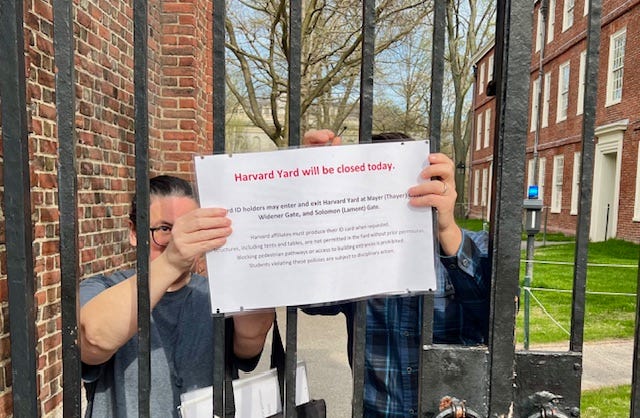
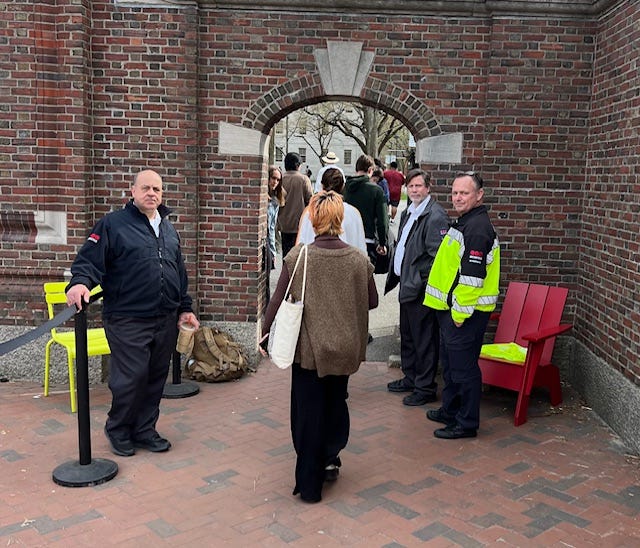
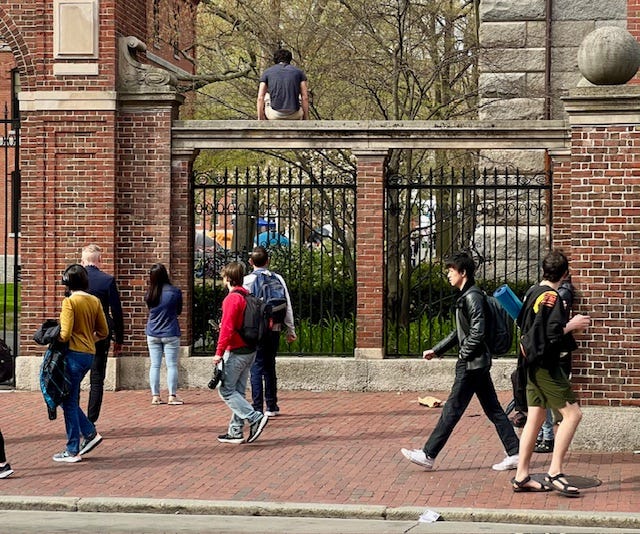

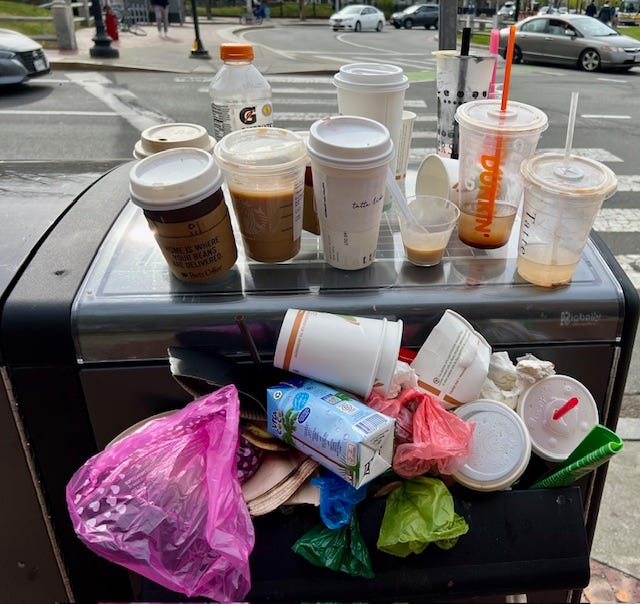

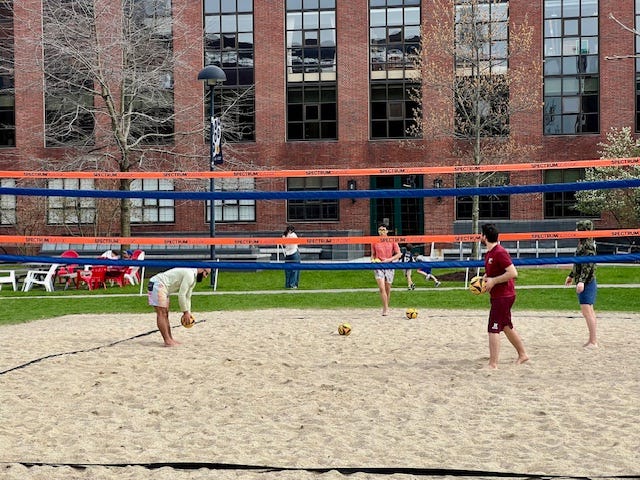
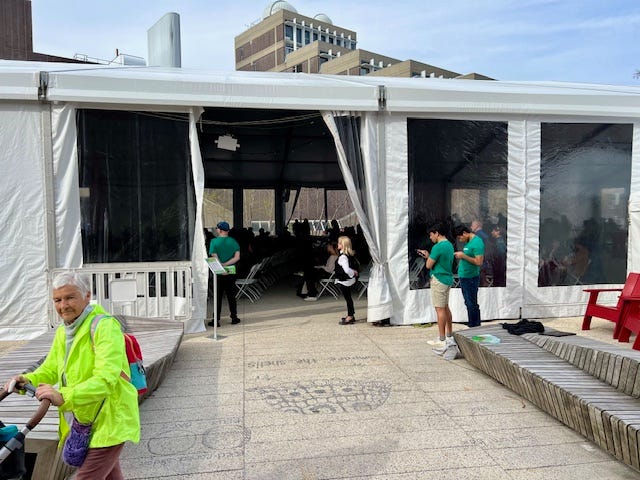
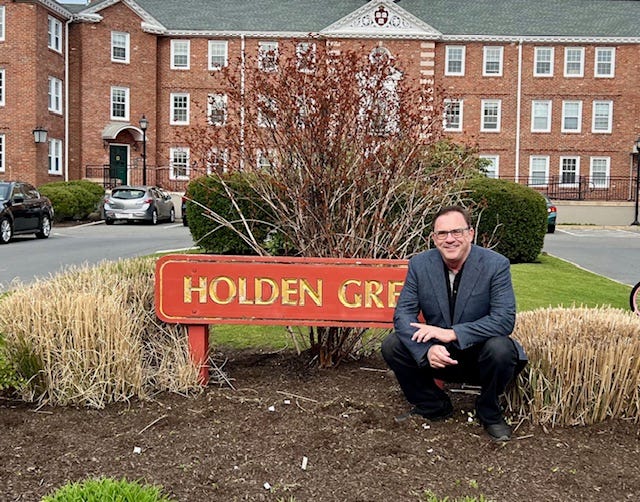
Great story (and hands on reporting). Been reading Instapundit for 20+ years and never knew about Glenn's upbringing at Harvard.
Super interesting and great story. My dad earned his PhD in Education at the University of Utah in 69-71. We rented a house but some of his classmates lived in married student housing-which looked crazy to me. Utah was obviously not crazy. If you had hair over your ears you were a radical. We drove to SF and down the coast to LA to go to Disneyland. Saw all kinds of hippies and broken down cars with neon paint all over them. I thought it was cool. One time I was in some building and a straight laced looking college kid asked me if I wanted some pot. I was a third grader. I told my father and he was pissed. Went looking for him but never found him, thankfully for the kid.
Fascinating about your father dropping acid and then getting Alzheimers. I read Thomas Wolfe's Electric Kool Aid Acid Test and I wonder how many of them passed from the same. Ken Kesey got diabetes, had strokes, and then liver cancer. Passed at age 66 which is young (considering I am 62)